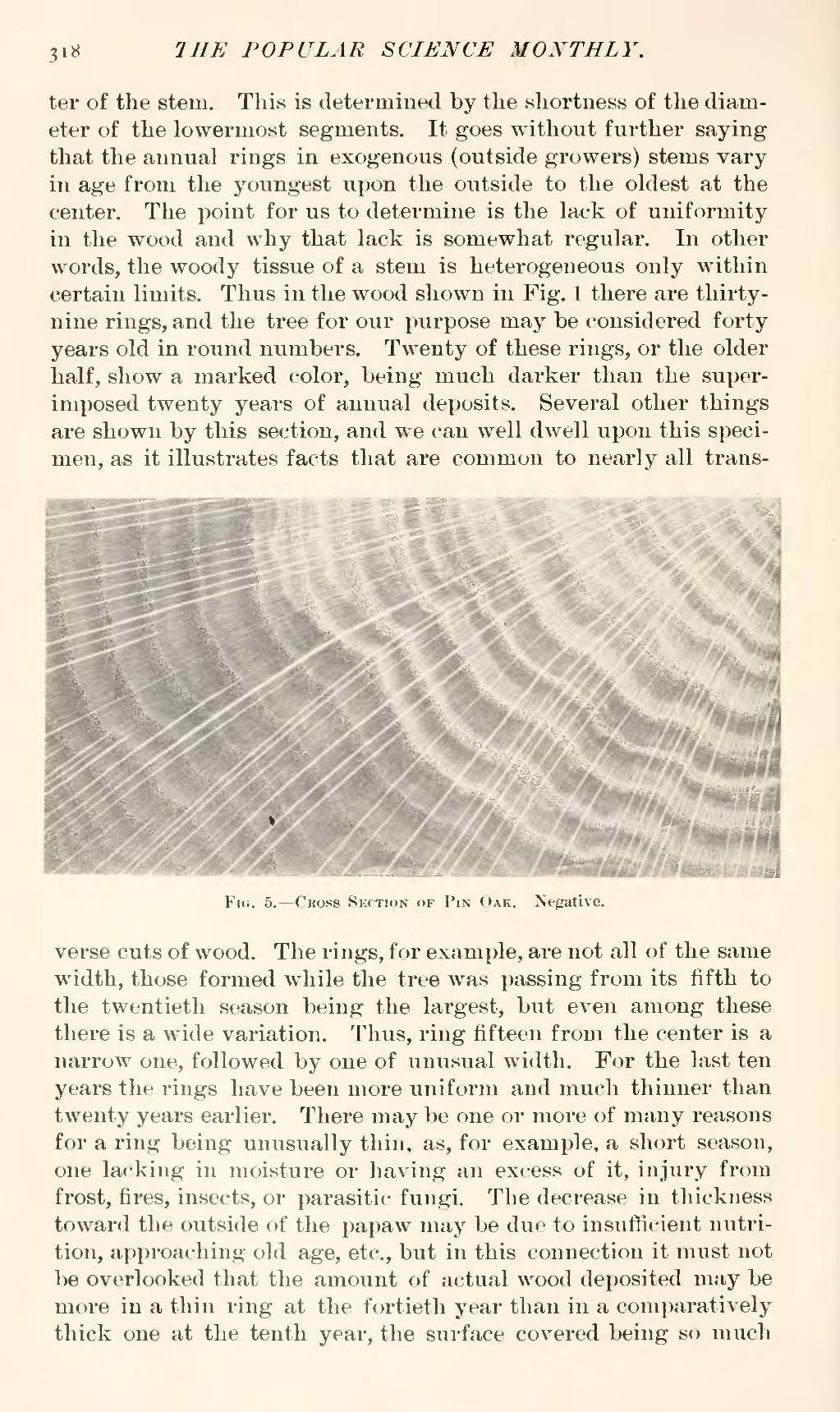ter of the stem. This is determined by the shortness of the diameter of the lowermost segments. It goes without further saying that the annual rings in exogenous (outside growers) stems vary in age from the youngest upon the outside to the oldest at the center. The point for us to determine is the lack of uniformity in the wood and why that lack is somewhat regular. In other words, the woody tissue of a stem is heterogeneous only within certain limits. Thus in the wood shown in Fig. 1 there are thirty-nine rings, and the tree for our purpose may be considered forty years old in round numbers. Twenty of these rings, or the older half, show a marked color, being much darker than the superimposed twenty years of annual deposits. Several other things are shown by this section, and we can well dwell upon this specimen, as it illustrates facts that are common to nearly all transverse

Fig. 5.—Cross Section of Pin Oak. Negative.
cuts of wood. The rings, for example, are not all of the same width, those formed while the tree was passing from its fifth to the twentieth season being the largest, but even among these there is a wide variation. Thus, ring fifteen from the center is a narrow one, followed by one of unusual width. For the last ten years the rings have been more uniform and much thinner than twenty years earlier. There may be one or more of many reasons for a ring being unusually thin, as, for example, a short season, one lacking in moisture or having an excess of it, injury from frost, fires, insects, or parasitic fungi. The decrease in thickness toward the outside of the papaw may be due to insufficient nutrition, approaching old age, etc., but in this connection it must not be overlooked that the amount of actual wood deposited may be more in a thin ring at the fortieth year than in a comparatively thick one at the tenth year, the surface covered being so much
